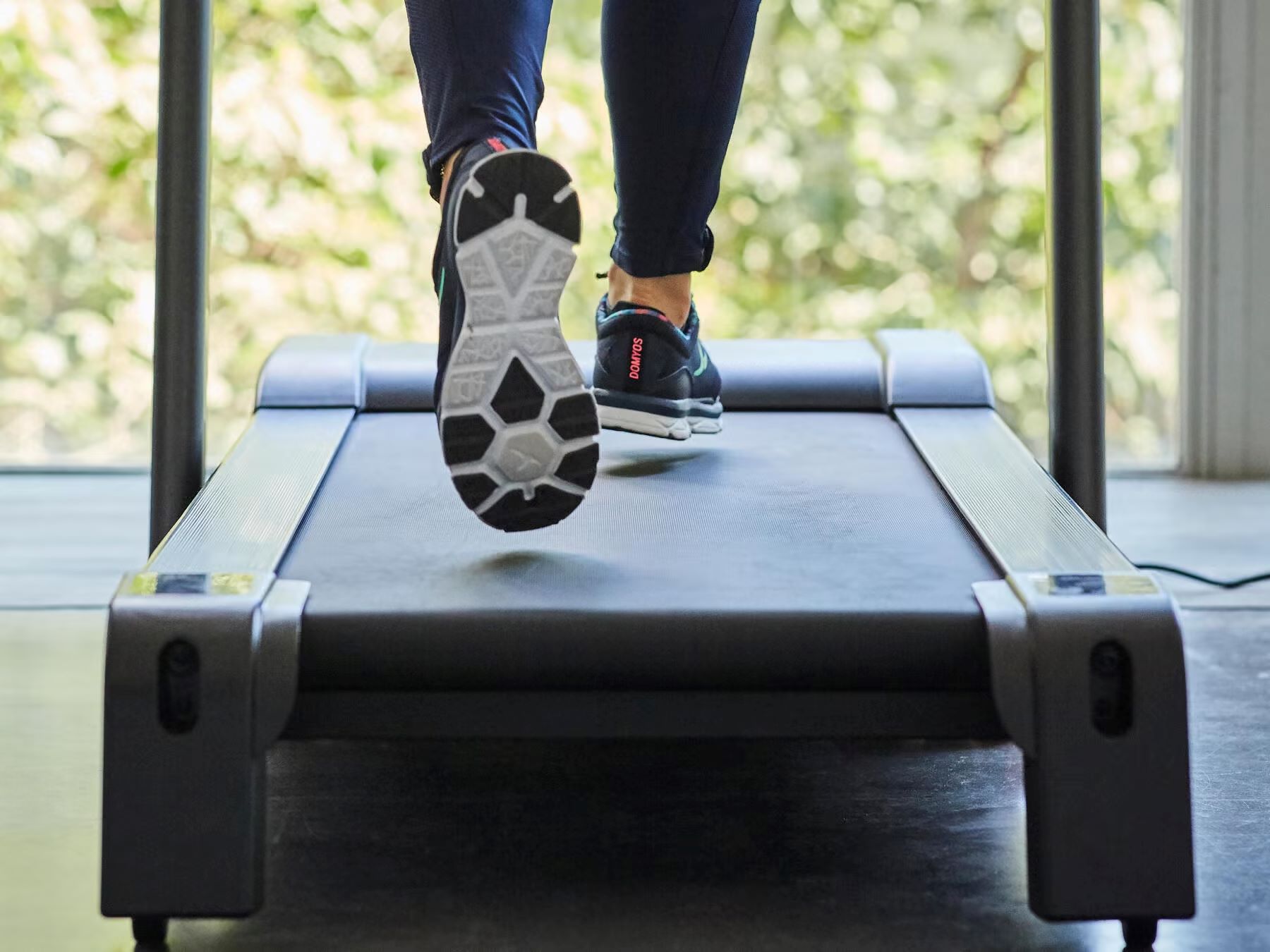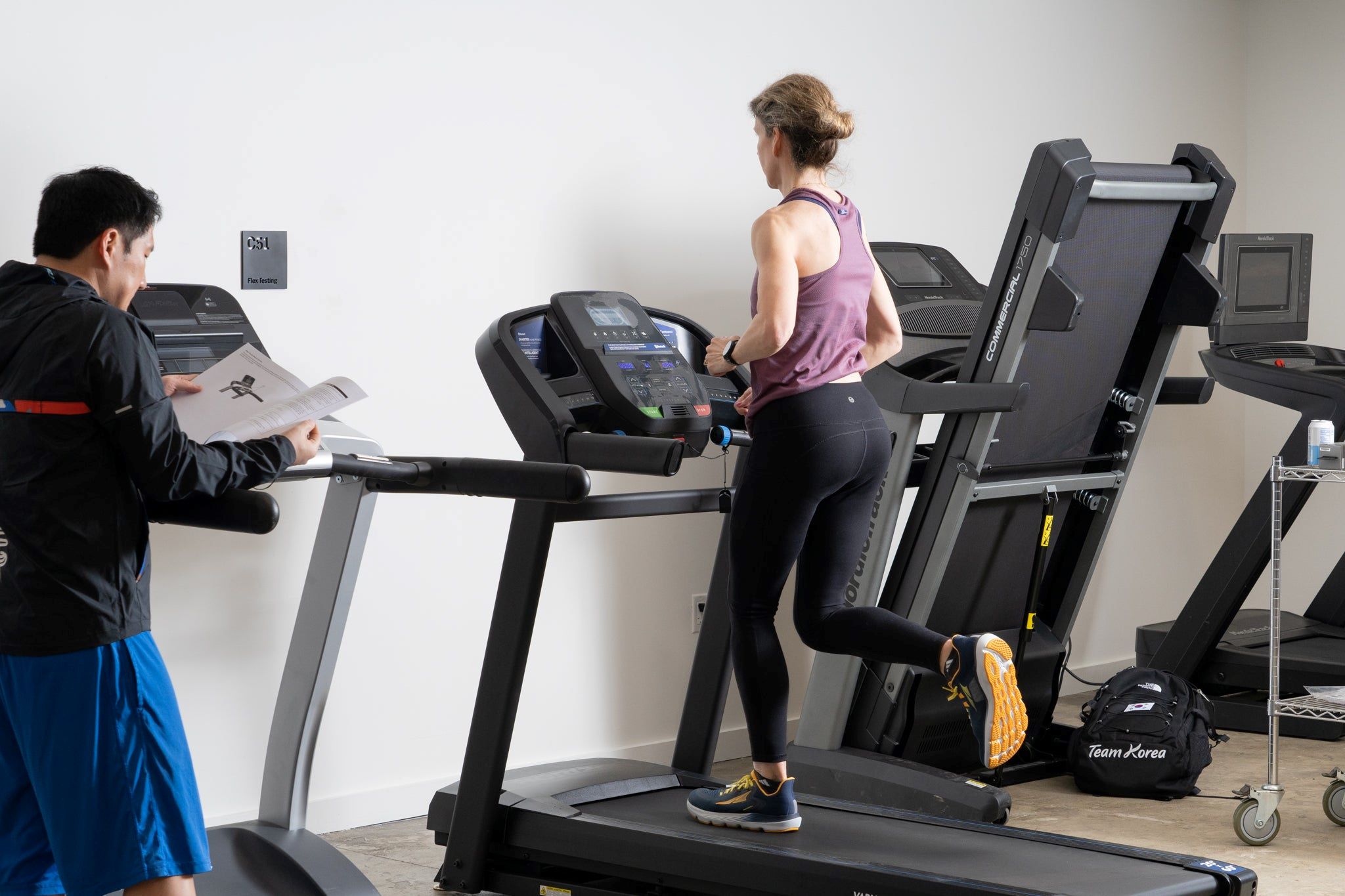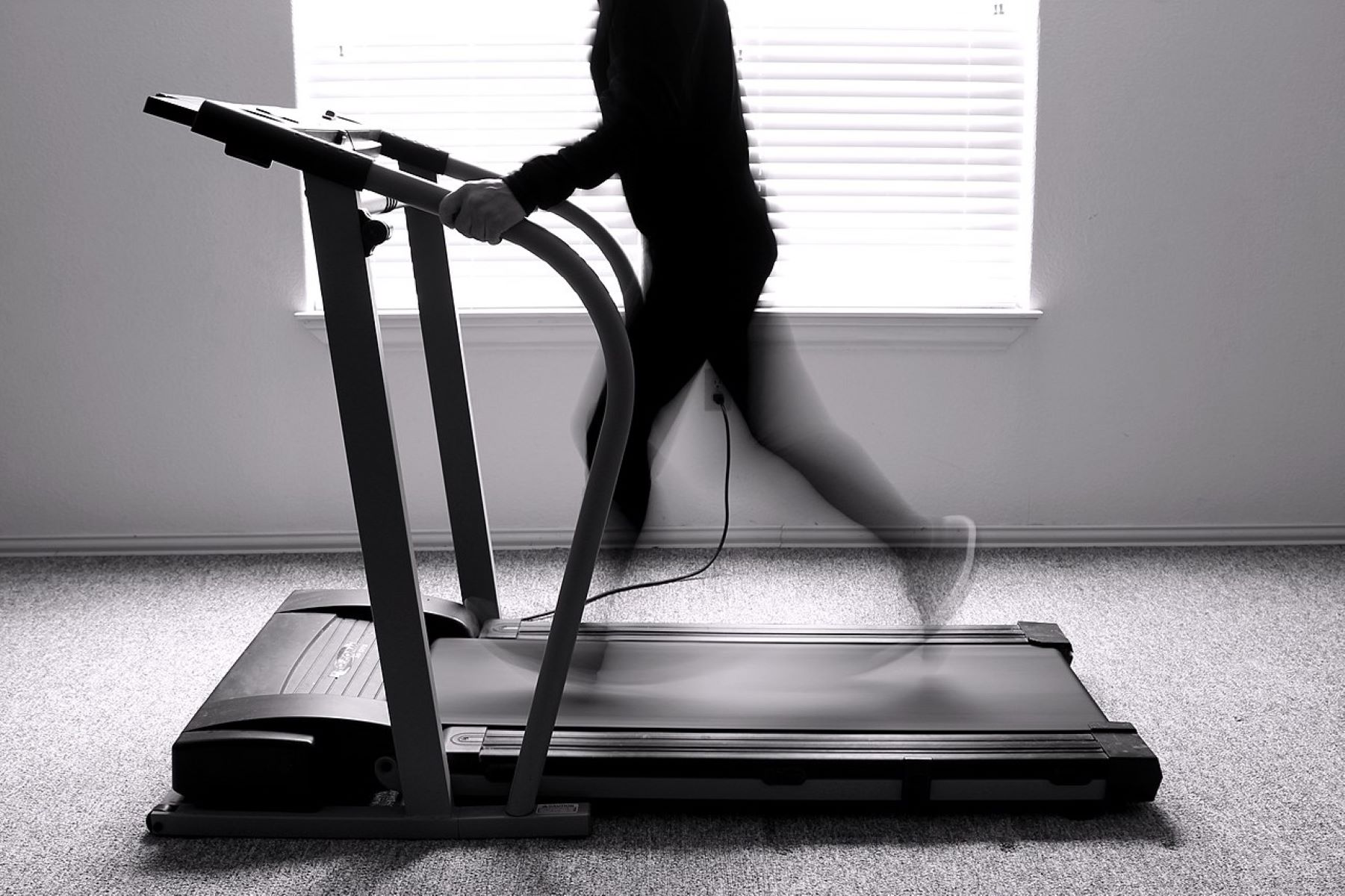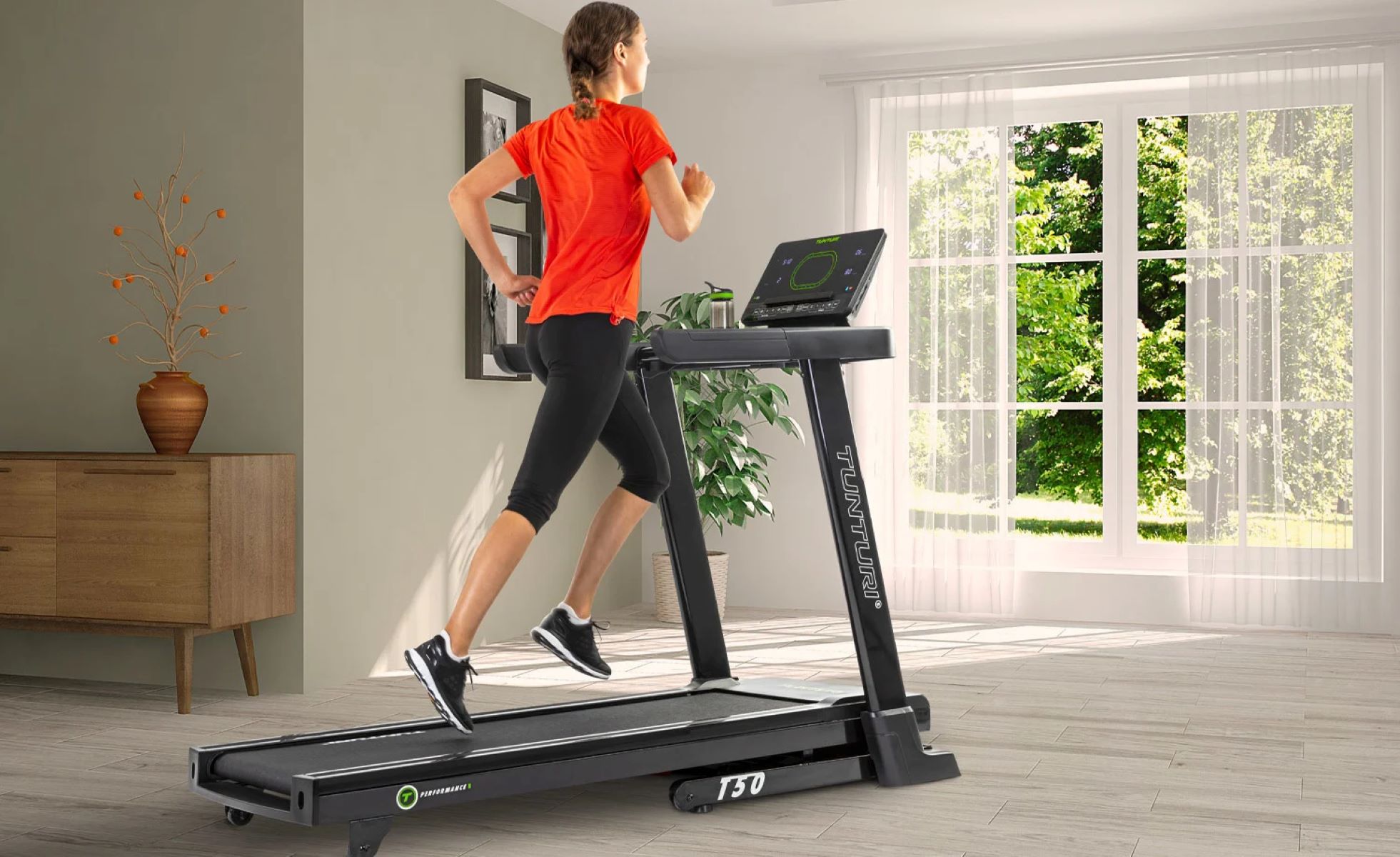Home>Misc>Featured>What Speed Is A 10 Minute Mile On The Treadmill


Featured
What Speed Is A 10 Minute Mile On The Treadmill
Modified: August 21, 2023
Discover the ideal speed for running a 10-minute mile on the treadmill. Increase your endurance and achieve your fitness goals with our featured workout tips.
Introduction
Running on a treadmill is a popular form of exercise that allows individuals to stay fit and active within the confines of their own homes or local gym. One common goal for many treadmill users is to run a 10-minute mile. Achieving this milestone requires a combination of speed, endurance, and proper form.
But what exactly does it mean to run a 10-minute mile on the treadmill? How does this translate to speed and distance? In this article, we will explore what speed a 10-minute mile represents on the treadmill and provide valuable tips on how to attain this pace.
Whether you’re a seasoned runner looking to improve your time or a beginner seeking to set a challenging fitness goal, understanding the significance of a 10-minute mile on the treadmill can be a helpful benchmark to track your progress.
Throughout this article, we will delve into different factors that can influence your treadmill speed, as well as the benefits, challenges, and strategies involved in running a 10-minute mile. So, get ready to lace up your running shoes and join us on this journey to discover the world of treadmill running at a 10-minute mile pace!
Understanding Speed on the Treadmill
Before we dive into what a 10-minute mile means on the treadmill, it’s important to understand how speed is measured and calculated on this exercise machine.
Most treadmills feature a digital display that shows your speed in miles per hour (mph), kilometers per hour (km/h), or minutes per mile. The speed setting determines how fast the treadmill belt moves, allowing you to adjust your pace based on your fitness level and goals.
When it comes to calculating your speed on the treadmill, it’s essential to know the relationship between speed and distance. In the case of a 10-minute mile, it means that you are running at a pace of 10 minutes to cover one mile. This translates to a speed of 6 miles per hour (mph) on the treadmill.
It’s worth noting that the treadmill’s speed setting may vary from one machine to another. While running at 6 mph will typically equate to a 10-minute mile pace, it’s always a good idea to double-check the speed calibration on your specific treadmill model to ensure accuracy.
Furthermore, some treadmills provide additional options, such as incline settings, that can simulate outdoor running conditions. Inclines can make your workout more challenging and mimic the resistance you would encounter when running outdoors. However, when calculating your speed, only consider the actual pace in relation to the flat surface.
Understanding the mechanics of speed on the treadmill is crucial for setting and achieving your running goals. Now that we have a solid foundation of how speed works on the treadmill, let’s explore what it means to run a 10-minute mile.
How to Calculate Your Treadmill Speed
Calculating your treadmill speed accurately is essential for tracking your progress and setting realistic goals. To determine your speed on the treadmill, follow these steps:
- Start by setting the treadmill to a specific speed, such as 6.0 mph.
- Begin running or walking on the treadmill at the selected speed.
- Use a stopwatch or the timer on the treadmill to measure how long it takes you to cover a specific distance, such as one mile.
- Once you have the time it took to complete the distance, you can calculate your speed. Divide the distance by the time in minutes. For example, if it took you 10 minutes to run one mile, divide 1 by 10 to get your speed in miles per minute. In this case, your speed is 0.1 miles per minute.
- If you prefer to calculate your speed in miles per hour, multiply your speed in miles per minute by 60. Using the previous example, multiplying 0.1 by 60 gives you a speed of 6 miles per hour.
Remember, these calculations may vary depending on the treadmill’s calibration and the accuracy of your measurements. It’s always a good idea to double-check the readings and calibration of your particular machine.
By accurately calculating your treadmill speed, you can monitor your progress over time and set achievable goals to challenge yourself and improve your performance.
Now that you know how to calculate your treadmill speed, let’s explore what running a 10-minute mile actually means in terms of speed and distance.
What Does a 10 Minute Mile Mean?
A 10-minute mile is a common benchmark for many runners, both beginners and seasoned athletes. Running a mile in 10 minutes means that you are maintaining a consistent pace of 10 minutes per mile, or 6 miles per hour, on the treadmill.
But what does this mean in terms of distance and speed? To put it into perspective, running a 10-minute mile pace would allow you to complete a 5K (3.1 miles) in approximately 31 minutes. This is a respectable time for recreational runners and can serve as a great starting point for those looking to improve their endurance and speed.
Running at a 10-minute mile pace is considered a moderate intensity exercise, helping to improve cardiovascular fitness, burn calories, and build endurance. It is a pace that can be sustained for a longer duration and is often used as a base pace for distance training.
For beginners or those new to running, a 10-minute mile may initially feel challenging. However, with consistent training and gradual progression, it is an attainable goal that can be accomplished over time.
It’s important to note that everyone’s fitness level and running abilities may differ, so don’t be discouraged if your current pace is slower than a 10-minute mile. The key is to focus on improving your personal performance and gradually working towards your goals.
Now that we have a better understanding of what a 10-minute mile means in terms of speed and distance, let’s explore the factors that can affect your treadmill speed.
Factors Affecting Treadmill Speed
Several factors can impact your treadmill speed and how quickly you can achieve a 10-minute mile. It’s important to consider these factors as they can affect your running performance and overall endurance. Here are some key factors that may influence your treadmill speed:
- Fitness Level: Your current fitness level plays a significant role in your ability to maintain a 10-minute mile pace. Regular aerobic exercise and cardiovascular training can improve your endurance, allowing you to sustain a faster speed for longer periods.
- Running Form: Proper running form and technique can optimize your efficiency and speed. Good posture, a mid-foot strike, and smooth arm movements can contribute to faster and more efficient running.
- Treadmill Settings: The incline and surface of the treadmill can affect your speed. Running at an incline engages your leg muscles differently and can create more resistance, which may slow down your pace. Additionally, running on a cushioned surface compared to a firm surface can impact your stride and speed.
- Mental Focus: Your mental focus and mindset can also influence your treadmill speed. Staying motivated, setting goals, and maintaining a positive mindset can help push through fatigue and enhance your performance.
- Environmental Factors: If you are running in a gym or at home, the temperature and humidity can affect your energy levels and performance. Cooler environments may be more conducive to running faster, while warmer conditions can make it more challenging.
It’s important to note that these factors may interact with each other, and the impact can vary from person to person. It’s crucial to listen to your body, adjust your training accordingly, and make gradual progress towards running a 10-minute mile on the treadmill.
Now that we understand the factors that can affect treadmill speed, let’s explore the benefits and challenges of running a 10-minute mile.
Benefits and Challenges of Running a 10 Minute Mile on the Treadmill
Running a 10-minute mile on the treadmill offers several benefits for your overall fitness and well-being. However, it also comes with its fair share of challenges. Let’s explore both sides:
Benefits:
- Cardiovascular Fitness: Running a 10-minute mile requires a moderate level of cardiovascular endurance, helping to improve your heart health and stamina.
- Calorie Burn: Running at a 10-minute mile pace can be an effective way to burn calories. Depending on factors such as body weight and intensity, you can expect to burn around 300-400 calories per hour.
- Endurance Building: Consistently running at a 10-minute mile pace will gradually build your endurance, allowing you to sustain faster speeds for longer periods of time.
Challenges:
- Physical Stamina: Running a 10-minute mile pace requires a certain level of physical stamina. Building up the endurance to maintain this pace can be challenging, especially for beginners or those who are not accustomed to regular cardiovascular exercise.
- Mental Focus: Running at a faster pace for a prolonged period of time demands mental fortitude. It can be mentally challenging to maintain consistency and push through fatigue during your treadmill workouts.
- Potential Injury Risks: Increasing your speed and intensity can increase the risk of injury if proper form and technique are not maintained. It’s crucial to listen to your body and gradually progress to avoid overtraining or strain.
Understanding both the benefits and challenges helps you approach your treadmill training with a realistic mindset. By acknowledging the potential difficulties and being aware of your progress, you can make informed decisions and adapt your training plan accordingly.
Now that we’ve explored the benefits and challenges, let’s move on to some helpful tips for achieving a 10-minute mile on the treadmill.
Tips for Achieving a 10 Minute Mile on the Treadmill
Running a 10-minute mile on the treadmill is an achievable goal with the right approach and training. Here are some tips to help you reach and maintain this pace:
- Gradual Progression: Start by setting a comfortable pace and gradually increase your speed over time. This approach allows your body to adapt to the faster pace and reduces the risk of injuries.
- Interval Training: Incorporate interval training into your workouts. Alternate between faster-paced intervals and recovery periods at a slower pace to improve your speed and endurance.
- Strength Training: Incorporate strength training exercises for your lower body, such as squats and lunges, to improve leg strength and power, which can enhance your running performance.
- Cross-Training: Engage in cross-training activities like cycling or swimming to improve overall cardiovascular fitness and reduce the risk of overuse injuries.
- Proper Form: Focus on maintaining good running form, including an upright posture, relaxed shoulders, and a mid-foot strike. This can help optimize your running efficiency and reduce the risk of muscle imbalances or injuries.
- Hydration and Nutrition: Stay properly hydrated before, during, and after your workouts. Fuel your body with balanced nutrition that includes carbohydrates, protein, and healthy fats to support your energy levels and recovery.
- Mental strategies: Practice positive self-talk and use visualization techniques to stay motivated and focused during your runs. Breaking your run into smaller milestones, such as reaching halfway or completing each mile, can help make the overall goal more manageable.
- Track Your Progress: Keep a training log to monitor your mileage, speed, and perceived effort. Tracking your progress can provide motivation and help you identify areas for improvement.
Remember that consistency is key when working towards running a 10-minute mile on the treadmill. Stick to your training plan, take rest days to allow for proper recovery, and listen to your body to avoid overtraining or injury.
With dedication, patience, and a smart approach, you can achieve your goal of running a 10-minute mile on the treadmill and improve your overall fitness level.
Now that we’ve covered some valuable tips, let’s wrap up our discussion.
Conclusion
Running a 10-minute mile on the treadmill is a challenging but attainable goal that can improve your cardiovascular fitness, endurance, and overall running performance. By understanding the mechanics of speed on the treadmill and calculating your pace accurately, you can track your progress and set realistic goals.
Factors such as fitness level, running form, treadmill settings, mental focus, and environmental conditions can all influence your treadmill speed. It’s important to consider these factors and make adjustments to your training plan accordingly.
Running at a 10-minute mile pace offers numerous benefits, including improved cardiovascular fitness, calorie burn, and endurance building. However, it also comes with challenges such as building physical stamina, maintaining mental focus, and the risk of injury.
To achieve a 10-minute mile on the treadmill, incorporate gradual progression, interval training, strength training, and cross-training into your workouts. Focus on maintaining proper running form, staying hydrated, and fueling your body with proper nutrition.
Remember to track your progress, stay motivated, and listen to your body throughout your fitness journey. Consistency, patience, and a positive mindset are key to reaching your goals.
So, lace up your running shoes, set the treadmill to a 10-minute mile pace, and embark on your exciting journey towards improved fitness and running performance. With dedication and perseverance, you can conquer the challenge of running a 10-minute mile on the treadmill and reap the rewards of a healthier, stronger, and more confident self.









